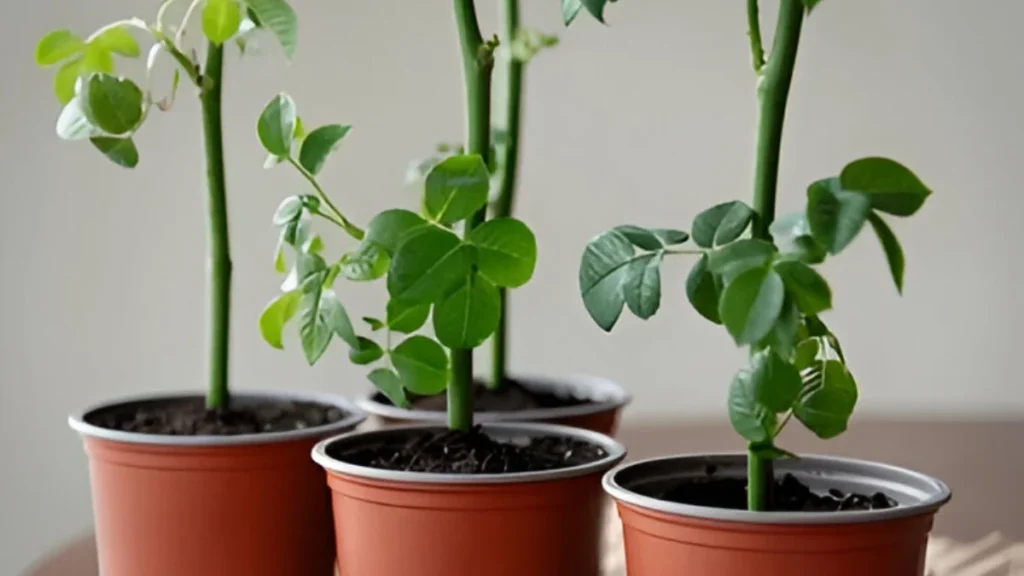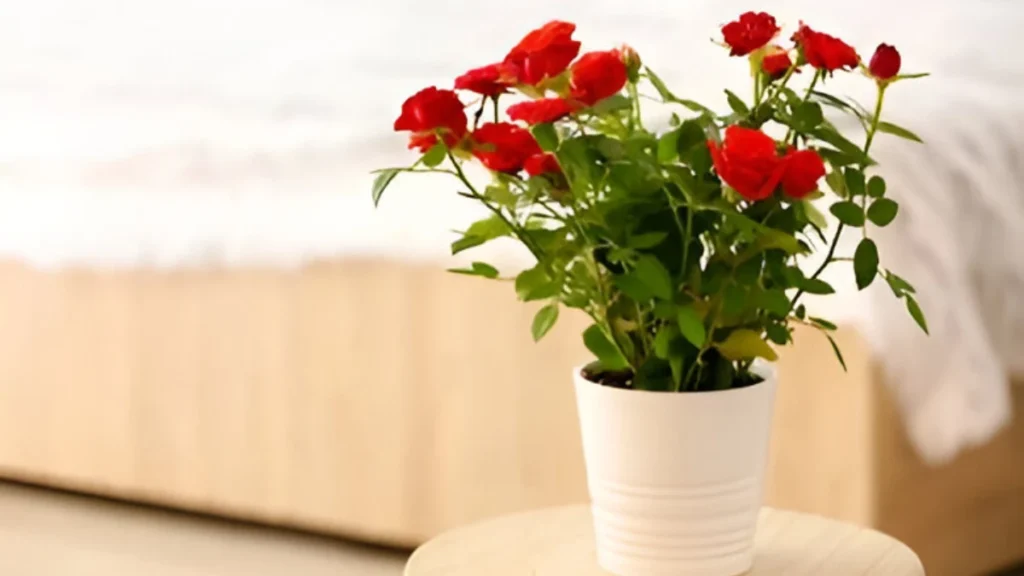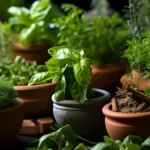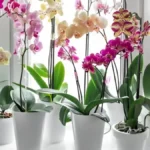If you’re curious about how to grow roses indoors, you’re in for a delightful experience. Roses are frequently connected to outdoor gardens because of their classic beauty and alluring scent. They may, however, flourish just as well indoors with the correct circumstances and care. Although growing roses indoors call for some patience and attention to detail. The benefits of seeing these blossoms thrive in your house are worth the work. We’ll go into professional advice and methods in this article to show you how to grow roses indoors.
Here are some expert tips on how to grow roses indoors successfully:
- Select rose cultivars that are meant to be grown inside. Because of their diminutive size and susceptibility to container gardening, miniature roses, typically thrive inside.
- To let extra water out, use a big container with drainage holes. Make sure the rose has enough room to grow and that the container is deep enough to support its root system.
- Ensure they receive at least 6 to 8 hours of direct sunlight per day in an indoor location. Windows that face west or south are best for getting as much sunshine as possible.
- Temperatures between 60–70°F (15–21°C) during the day and a little bit colder at night are ideal for roses. If possible, water the leaves frequently or keep a humidifier close by to maintain moderate humidity levels, particularly in the dry winter months.
- Maintain a constant, but not soggy, moisture content in the soil. When the top inch of soil seems completely dry to the touch, give your indoor roses a thorough watering; just make sure any extra water can drain out of the container. Keep the foliage dry to avoid fungal problems.

How to grow roses indoors with proper pruning and maintenance:
- Throughout the growing season (spring through fall), treat your indoor roses using a balanced liquid fertilizer designed for flowering plants. For optimum development and a profusion of blooms, adhere to the application rates and frequency recommended by the manufacturer.
- Frequent deadheading and pruning aid in preserving the plant’s form and promote ongoing flowering. To enhance air circulation and general plant health, remove wasted flowers by cutting just above a set of healthy leaves and clipping any dead, broken, or overgrown stems.
- Look out for typical indoor pests like spider mites, aphids, and whiteflies; also, be aware of fungal illnesses like black spots and powdery mildew. Regularly check your roses, and when necessary, take quick action to address any problems with organic or chemical remedies.
- Indoor roses may require extra support, depending on the variety, to keep stems from bending or becoming lanky from the weight of blossoms. To support and train the plant to grow erect, use small trellises or supports.
- Since indoor roses hibernate over the winter, cut back on fertilizer and watering. If the plant receives little natural light, move it to a colder spot away from drafts and think about adding more lighting.

Conclusion:
In conclusion, how to grow roses indoors? can, with the appropriate information and attention, be a fulfilling and joyful experience. You can effectively develop lovely roses in your house by according to professional advice on choosing the best types, providing enough light, humidity, and temperature, as well as appropriate watering and fertilizing techniques.
Certainly! If you’d like to learn more, please consider following our WhatsApp Channel, Facebook, Instagram, YouTube, Twitter, and Pinterest.
A frequently asked questions:
Q1: How to grow roses indoors with appropriate fertilizer?
A1: Give roses a balanced fertilizer designed for flowering plants to promote healthy development and bloom output if you want to grow roses inside.
Q2: How to grow roses from cuttings in water?
A2: To grow roses from stem cuttings in water, pick a healthy one, remove leaves, place in water, wait for roots to form, and then plant in soil.
Q3: How to grow roses from seeds?
A3: Soak rose seeds for 24 hours, plant in moist soil, and keep in a warm, sunny spot. Germination can take weeks to months. Transplant seedlings when they have a few true leaves.



